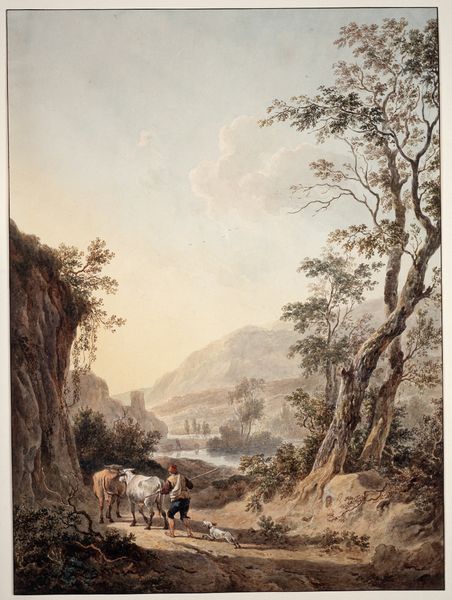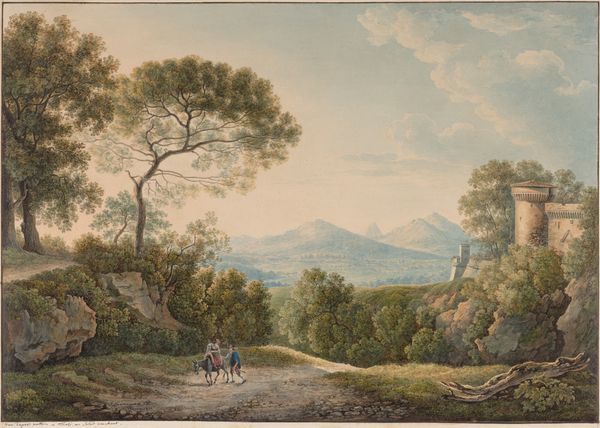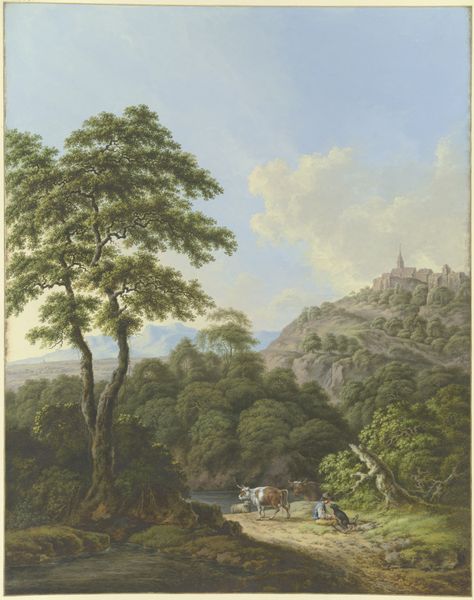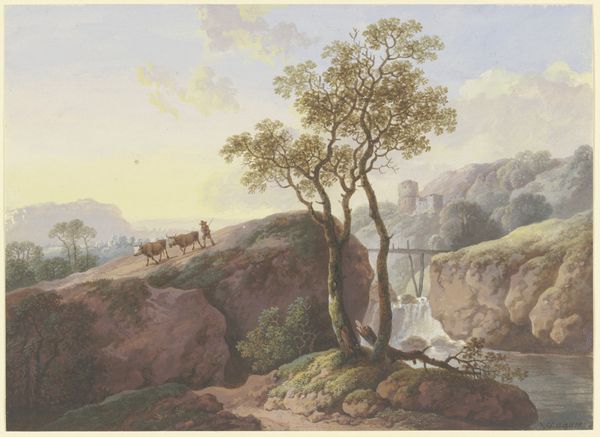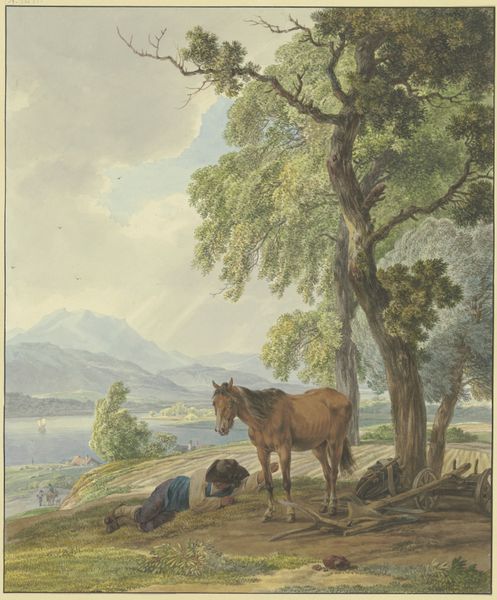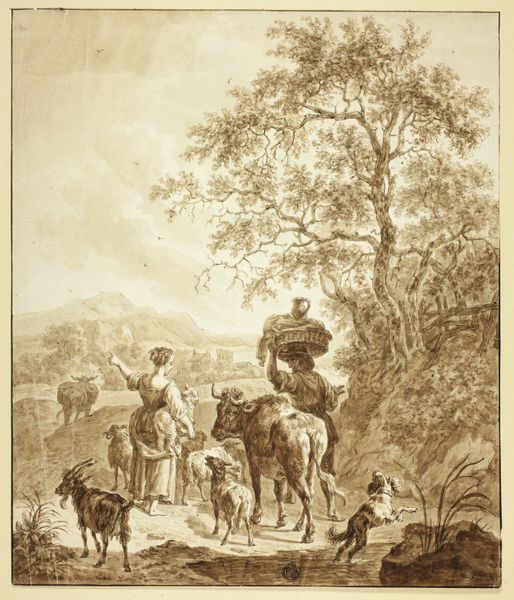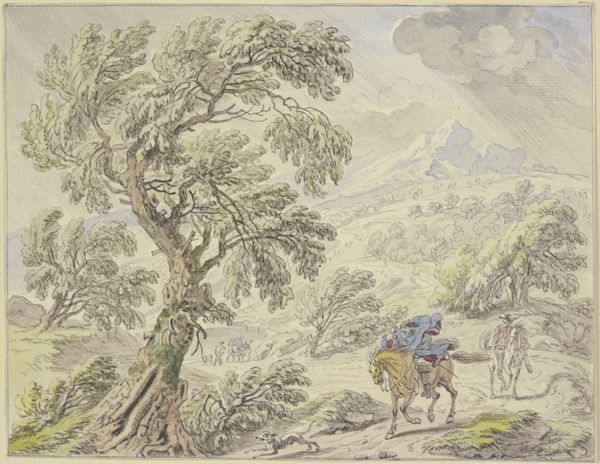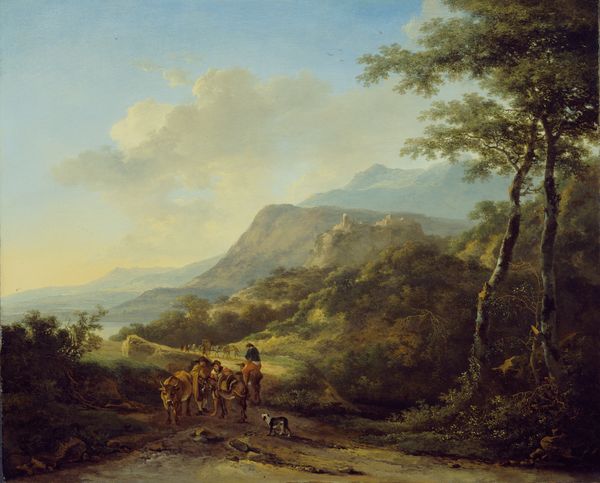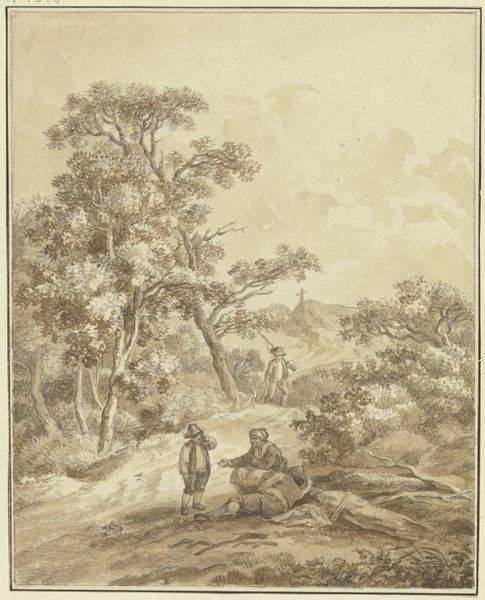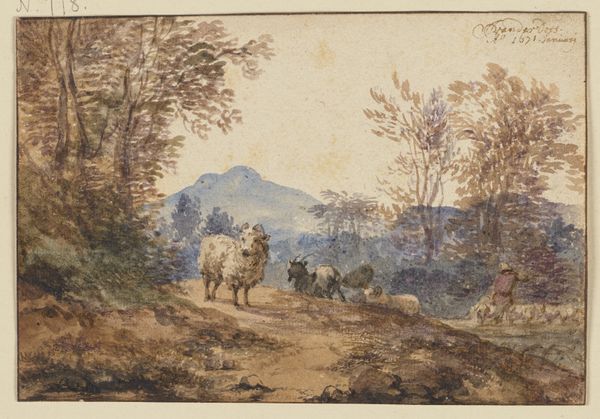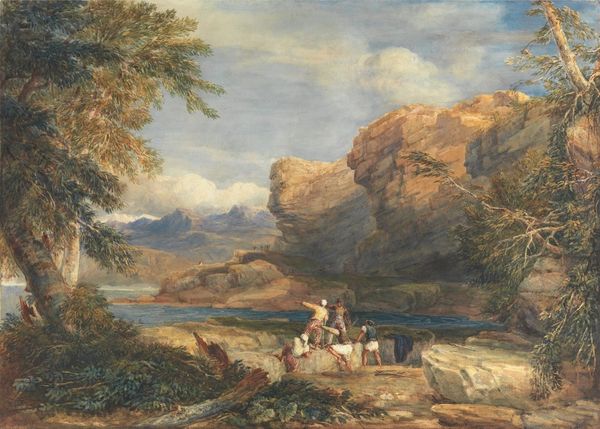
Italianate Landscape with Shepherd and Shepherdess on a Path c. 1795
0:00
0:00
drawing, painting, gouache, plein-air, watercolor, ink, chalk
#
drawing
#
painting
#
gouache
#
plein-air
#
landscape
#
figuration
#
watercolor
#
ink
#
romanticism
#
chalk
#
genre-painting
#
watercolor
Copyright: Public Domain
Editor: So, here we have Jacob van Strij’s “Italianate Landscape with Shepherd and Shepherdess on a Path,” created around 1795. It's done in gouache, watercolor, ink, and chalk. It has a very calm and serene feeling… almost idealized. What stands out to you? Curator: Immediately, I see a yearning for a past age, a simpler time. The shepherds and shepherdesses are tropes representing pastoral life, which, in itself, is loaded with symbolic weight. Editor: Loaded how? Curator: Think of the 18th century – the Enlightenment, the rise of industry, and increasing social disparity. Paintings like this reflect a desire for a world untouched by those changes, even if that world is only found in art. Do you see how even the light seems to idealize their journey? Editor: Yes, it's a very soft light. Is that also symbolic? Curator: Absolutely. The soft, golden light romanticizes labor. It transforms the realities of shepherding into a gentle, harmonious scene. Consider the Italianate landscape itself. Italy, for northern Europeans, had long symbolized classical beauty and a kind of bucolic innocence. Editor: So, it's not necessarily about a real place, but about the idea of Italy? Curator: Precisely. It’s a projection of cultural memory and longing. A place that has weight that’s emotional as well as aesthetic, layered with meanings from the past. This piece isn't just a pretty scene; it's an articulation of a complex yearning. Editor: I never would have thought about that much symbolism being embedded in what seemed like a simple landscape. It is a good reminder of how an image can speak of history and emotion so effectively.
Comments
No comments
Be the first to comment and join the conversation on the ultimate creative platform.
